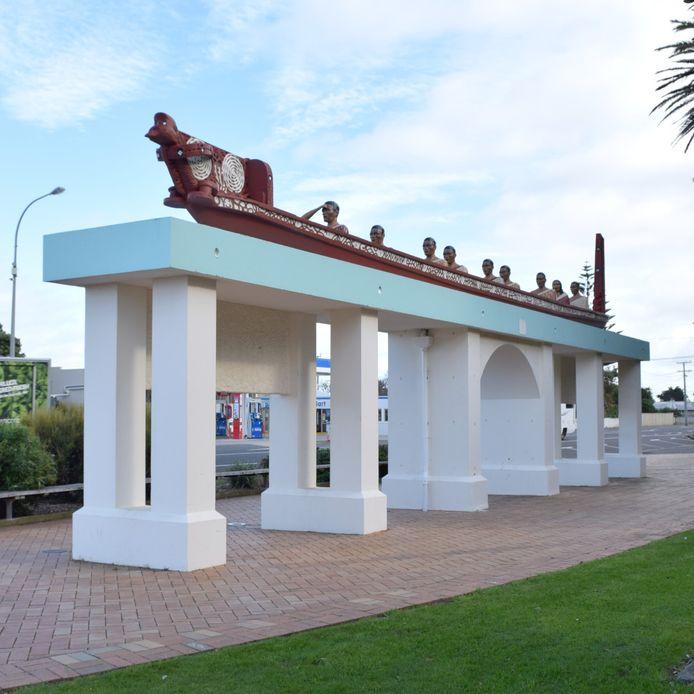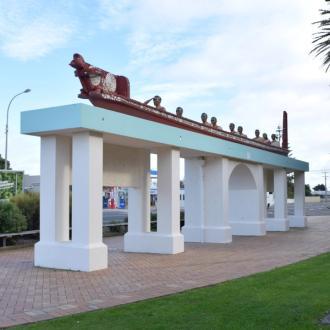The Maori Trust Board
1 Artwork
Taranaki iwi and hāpu organised as the Taranaki Maori Trust Board, sometimes also referred to as the Taranaki Native Trust Board, in late 1930. In 1928 the resolution of a Royal Commission into wartime land confiscations had recommended compensation of £5OOO be paid yearly to Taranaki iwi. As a consequence the Maori Trust Board in Taranaki were able to support the commissioning of the Aotea Waka in Patea, completed in 1933.
"During the 19th and 20th centuries, iwi (tribes) began to replace hapū (clans or descent groups) as the main political body. From the mid- to late 19th century, Māori had increasingly sought pan-tribal unity in order to oppose government measures that were not in Māori interests. Government policy actually favoured the shift from hapū to iwi, as the Crown preferred to deal with a small number of regional iwi groups rather than numerous hapū. After 1945, tribal trust boards were formed on an iwi basis in order to settle historical Māori grievances under the Treaty of Waitangi. This process continues today." (Taonui)
The Māori Trust Board Act 1955 was passed to formalise this practice.
See also:
- Rāwiri Taonui, 'Tribal organisation - The history of Māori social organisation', Te Ara - the Encyclopedia of New Zealand.
- 'Natives' Solemn Trust - Grant to Local Maoris [sic.]' Taranaki Daily News, 26 November 1930, Page 6
- 'Penalties of Rebellion' Taranaki Daily News, 29 September 1928, Page 15
- Te Puni Kōkiri

F. A. Jones, Panenui Haurangaranga et. al., 'Aotea Waka Memorial' (1933), Pātea
Image: Bronwyn Holloway-Smith, Public Art Heritage Aotearoa New Zealand, 2021
- Associated Artworks

